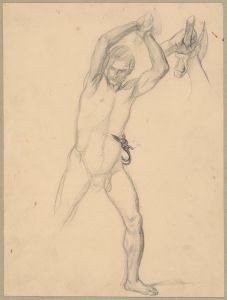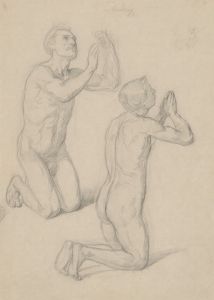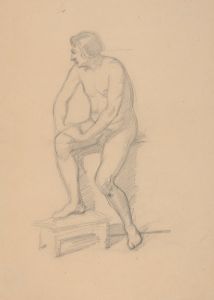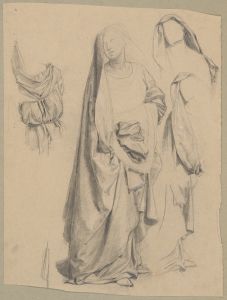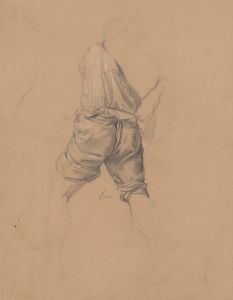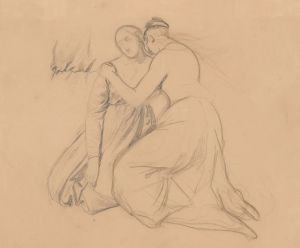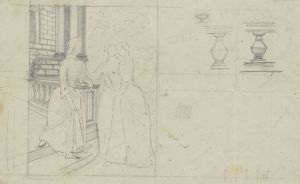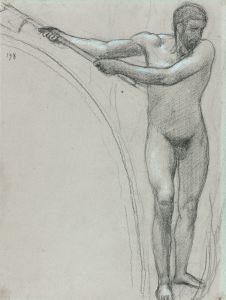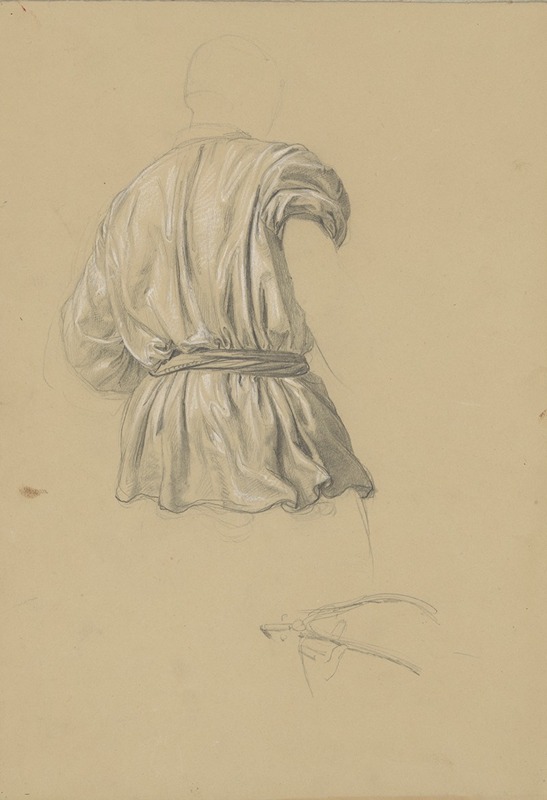
Study of clothing of the executioner with an axe to the painting ‘Martyrdom of St. Josaphat Kuntsevych’
A hand-painted replica of Józef Simmler’s masterpiece Study of clothing of the executioner with an axe to the painting ‘Martyrdom of St. Josaphat Kuntsevych’, meticulously crafted by professional artists to capture the true essence of the original. Each piece is created with museum-quality canvas and rare mineral pigments, carefully painted by experienced artists with delicate brushstrokes and rich, layered colors to perfectly recreate the texture of the original artwork. Unlike machine-printed reproductions, this hand-painted version brings the painting to life, infused with the artist’s emotions and skill in every stroke. Whether for personal collection or home decoration, it instantly elevates the artistic atmosphere of any space.
Józef Simmler, a prominent Polish painter of the 19th century, is known for his historical and religious paintings. One of his notable works is the "Martyrdom of St. Josaphat Kuntsevych," which captures the dramatic and tragic moment of the saint's martyrdom. This painting is a significant representation of Simmler's skill in depicting intense emotion and historical detail.
St. Josaphat Kuntsevych was a 17th-century archbishop of the Ruthenian Catholic Church, known for his efforts to bring about the reunion of the Eastern Orthodox Church with the Roman Catholic Church. His work, however, was met with resistance, and he was ultimately martyred in 1623. The painting by Simmler portrays the moment of his execution, a poignant scene that reflects both the violence of the act and the sanctity of the martyr.
In the painting, the executioner is depicted with an axe, a common symbol of execution and martyrdom in art. The study of the executioner's clothing in this painting reveals much about the historical context and Simmler's attention to detail. The executioner is often shown wearing garments that reflect the period's attire, which may include elements typical of 17th-century Eastern European dress. This attention to historical accuracy is a hallmark of Simmler's work, as he sought to create an authentic representation of the events he depicted.
Simmler’s use of color and composition in the painting serves to highlight the central figure of St. Josaphat, drawing the viewer’s eye to the saint amidst the surrounding chaos. The executioner's clothing, while not the focal point, is rendered with a level of detail that adds to the overall realism of the scene. The folds of the fabric, the texture, and the way the light interacts with the material all contribute to a lifelike portrayal that enhances the narrative of the painting.
The painting not only serves as a religious and historical document but also as a testament to Simmler’s artistic abilities. His ability to convey emotion through facial expressions and body language is evident in the figures surrounding St. Josaphat, including the executioner. The tension and drama of the moment are palpable, inviting viewers to reflect on the themes of faith, sacrifice, and conflict.
Overall, Józef Simmler’s "Martyrdom of St. Josaphat Kuntsevych" is a powerful work that combines historical accuracy with emotional depth. The study of the executioner’s clothing within the painting is just one aspect of Simmler’s meticulous approach to capturing a significant moment in religious history. Through his art, Simmler provides a window into the past, allowing contemporary audiences to engage with the story of St. Josaphat and the broader historical context of his martyrdom.






